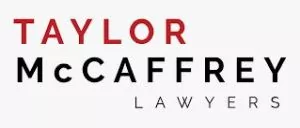Section 116 of the Income Tax Act (Canada) is a popular subject among tax commentators as it is fraught with pitfalls for the unwary. However, it is worth revisiting due to some procedural accommodations that the Canada Revenue Agency (the "CRA") has made in light of the Covid-19 pandemic.
Briefly, Section 116 imposes an obligation on non-resident vendors (including deemed non-residents) ("vendors") to give notice to the CRA of (and in so doing apply for a certificate of compliance (a "Certificate") in respect of) a disposition of "taxable Canadian property" ("TCP") and/or certain other prescribed property (other than "excluded property") either before or within 10 days of the disposition. A corresponding obligation is imposed on purchasers (whether resident or non-resident) of such property to withhold and remit a portion of the purchase price (25% or 50%, depending on the type of property) to the Receiver General for Canada (the "RGC") on account of the tax payable by the vendor unless they receive the Certificate within 30 days after the end of the month in which the property was acquired.1
One of the more frequently cited examples of TCP is real property situated in Canada, but TCP also includes, among other things, a share of a private corporation, or an interest in a partnership or a trust, if at any particular time in the last 60 months, more than 50% of the fair market value of the share or interest was derived directly or indirectly from, among other things, real property situated in Canada. As a result, Section 116 can apply not only to real estate transactions, but to corporate, trust and estate transactions as well. Since the provision can be highly punitive for purchasers who fail to withhold and remit, it is good practice to assume that it applies whenever the vendor is or is suspected to be a non-resident until an exemption can be confirmed. A detailed discussion of the requirements of the various exemptions, tax treaty issues and the purchaser's potential due diligence defence has been the subject of ample tax commentary and is beyond the scope of this article.
In addition to the purchaser's liability to remit the withheld amount, the CRA may assess penalties (which increase based on number of days late up to a maximum) and interest against vendors who fail to give notice and purchasers who fail to remit within the applicable prescribed period. Although Section 116 provides purchasers with a statutory right to withhold, it is helpful to spell out the procedure for the withholding in the purchase agreement, to assist the parties' solicitors in dealing with the withheld amount and timing issues through appropriate trust conditions. The allocation of the purchase price in the purchase agreement is especially important where the purchased property includes both property that is and is not subject to Section 116.2
Once the CRA has received the notice/application3 and either an amount to cover the tax on any gain that the vendor might realize as a result of the disposition, or acceptable security therefor, the CRA will issue the Certificate. Even in pre-pandemic times, the CRA was rarely able to issue the Certificate before the purchaser became liable to remit the withheld amount, except perhaps where advance notice was given. This can create a cash-flow issue for vendors, who must then seek a refund of any excess of the remitted withheld amount over the tax on the gain ("Excess Withholding") from the CRA. However, the CRA has an administrative practice4 of issuing "comfort letters" confirming that the purchaser may continue to hold the withheld amount after the prescribed remittance date without suffering interest or penalties, provided the vendor has applied for the Certificate and the withheld amount is held in escrow for the RGC. A comfort letter could be requested concurrently with an application for a Certificate. Once the CRA has reviewed the notice/application and confirmed the amount payable, the appropriate portion of the withheld amount can be applied toward obtaining the Certificate and, upon the parties' receipt thereof, any Excess Withholding can be paid to the vendor.
In response to the pandemic, the CRA's website5 states that as of June 19, 2020, taxpayers or their representatives may submit applications for Certificates online. Alternatively, applications for Certificates, requests for comfort letters, and enquiries may be made by email.6 Sensitive information should not be included in the initial email or any attachments, and should only be provided once the CRA has responded and email communication has been authorized.
The foregoing is intended as a general summary only and is not a substitute for a review of the applicable provision(s) and/or specific advice, which should be obtained where required.
Footnotes
1 A helpful starting point for (but by no means an exhaustive statement of) the CRA's administrative views of Section 116 can be found in Information Circular 72-17R6 - Procedures Concerning the Disposition of Taxable Canadian Property by Non-Residents of Canada-Section 116.
2 Or property that is subject to Section 116, but at the different withholding rates noted above.
3 One or more of Forms T2062, T2062A, T2062B or T2062C may apply, depending on the circumstances. It can be helpful to submit the applicable form(s) with a cover letter in which additional details can be set out.
4 That is, a practice that is not provided for in the legislation.
Originally prepared and published in the Manitoba Bar Association newsletter Headnotes & Footnotes, Volume 52, No. 10, December 2020
The content of this article is intended to provide a general guide to the subject matter. Specialist advice should be sought about your specific circumstances.

